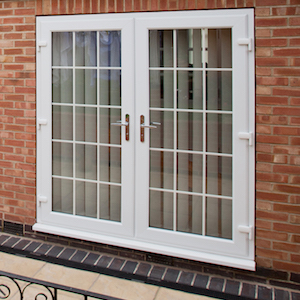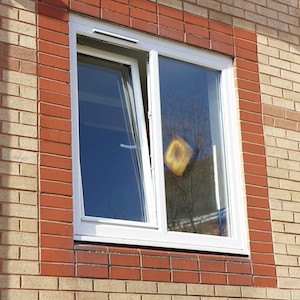Guide To French Doors And Windows: The Intermediate Guide For French Doors And Windows

The Allure and Functionality of French Doors and Windows
French windows and doors have long been a trademark of sophistication and elegance in home design. These architectural aspects, soaked in history and revered for their visual appeal, offer a special mix of design and functionality that has made them a seasonal favorite among house owners and designers alike. Whether used to accentuate a traditional area or to include a touch of grace to a contemporary setting, French doors and windows can change a room, welcoming natural light and developing a seamless connection between indoor and outdoor living areas.
The History of French Doors and Windows
The term « French door » go back to the 17th century, throughout the reign of Louis XIV in France. At the time, these doors were a sign of high-end and luxury, frequently utilized in grand palaces and estates. The style was characterized by multiple glass panes and classy detailing, which permitted adequate light and a breathtaking view of the surrounding landscape. French windows, likewise, became a method to maximize natural light and ventilation in upper-story spaces, where bigger openings were not useful.
Over the centuries, the style of French doors and windows has actually developed, but their essential attributes have stayed consistent. Today, they are widely utilized in different architectural styles, from classic to modern-day, and can be found in homes, workplaces, and business areas all over the world.
Types of French Doors
-
Conventional French Doors
- Design: Traditional French doors are typically made of wood and function multiple glass panes, often organized in a grid pattern. The wood can be stained or painted to match the space’s design.
- Use: These doors are commonly used in formal living spaces, dining spaces, and master bed rooms, where they add a touch of elegance and heat.
-
Modern French Doors
- Design: Modern French doors frequently have a sleek, minimalist design with less or bigger glass panes. They can be made from products like aluminum or steel, which provide a more contemporary appearance and improved energy performance.
- Use: These doors are perfect for modern-day interiors, where a tidy, uncluttered aesthetic is desired. They are typically utilized in living rooms, kitchen areas, and outdoor patios.
-
Sliding French Doors
- Design: Sliding French doors, likewise referred to as French moving doors, consist of 2 or more panels that move along a track. They can be made of wood, vinyl, or aluminum and are offered in both traditional and contemporary styles.
- Use: Sliding French doors are best for spaces where a hinged door would be not practical, such as small patios or verandas. They provide easy gain access to and a wide, unobstructed view.
-
Bifold French Doors
- Style: Bifold French doors fold back on themselves, similar to an accordion. They can be made of wood, aluminum, or other products and are often used in bigger openings to produce a sense of openness.
- Use: These doors are ideal for linking big indoor areas to outside areas, such as in open-plan living spaces or terraces.
Kinds Of French Windows
-
Sash French Windows
- Style: Casement French windows are hinged at the side and open outward, comparable to a door. They can be single or double-paned and are often decorated with ornamental grilles or mullions.
- Usage: These windows are typically utilized in bedrooms, living rooms, and dining spaces, where they supply excellent ventilation and a clear view of the outdoors.
-
Awning French Windows
- Style: Awning French windows are hinged on top and open outside. They are developed to permit for ventilation even in rainy weather condition, as the external angle of the window helps to deflect water.
- Use: These windows are typically utilized in cooking areas, restrooms, and other locations where a smaller window is required but excellent ventilation is essential.
-
Set French Windows
- Style: Fixed French windows do not open however are made entirely of glass. They are typically utilized in conjunction with casement or awning windows to create a larger, more extensive window setup.
- Usage: These windows are perfect for locations where a view is necessary but ventilation is not required, such as in a sitting space or conservatory.
Benefits of French Doors and Windows
-
Aesthetic Appeal
- French doors and windows are known for their timeless charm. They can enhance the architectural character of a home and include a touch of sophistication to any room.
-
Natural Light
- The large glass window door panes in French doors and windows allow an abundance of natural light to flood into the area. This can make rooms feel brighter, more roomy, and more inviting.
-
Ventilation
- French windows, specifically sash and awning styles, provide outstanding ventilation. They can be easily opened to permit fresh air to circulate, which is especially helpful in warmer climates.
-
Energy Efficiency
- Modern French windows and doors are designed with energy performance in mind. Functions like double glazing, low-E glass, and weather-stripping help to minimize heat transfer, keeping the home warmer in winter season and cooler in summertime.
-
Connection to the Outdoors
- French windows and doors develop a strong visual and physical connection in between indoor and outdoor areas. This can improve the living experience, making it easier to delight in the appeal of the natural surroundings.
Considerations When Choosing French Doors and Windows
-
Product
- Wood: Offers a traditional look and outstanding insulation but requires regular upkeep.
- Aluminum: Provides a modern, sleek appearance and is low maintenance however can be less insulating.
- Vinyl: Offers a balance between visual appeals and practicality, with excellent insulating residential or commercial properties and minimal upkeep.
-
Size and Configuration
- French doors and windows can be found in various sizes and configurations. Consider the dimensions of your space and the desired view when choosing the appropriate size and style.
-
Security
- Ensure that the French doors and windows you select are geared up with robust security features, such as multi-point locking systems and strengthened frames.
-
Expense
- French doors and windows can differ considerably in price depending upon the material, size, and style. Set a spending plan and think about the long-term advantages, such as energy savings and increased home value.
-
Upkeep
- Some materials, like wood, require more upkeep than others. Consider the time and cost of maintenance when making your choice.
Installation and Maintenance
- Installation: Proper installation is vital to ensure the durability and efficiency of French upvc doors windows and windows. Hire an expert installer to make sure that the doors and windows are properly lined up and securely installed.
- Maintenance: Regular cleaning and examination can help to preserve the performance and look of French doors and windows. Use a soft cloth or brush to clean the glass and frames, and inspect for any signs of wear or damage.
FAQs About French Doors and Windows
Q: Are French doors and windows energy effective?
- A: Yes, contemporary French windows and doors are designed to be energy efficient. Functions like double glazing, low-E glass, and weather-stripping can considerably reduce heat transfer, assisting to control the temperature level of your home.
Q: How do I tidy French windows and front doors with windows?
- A: Use a soft fabric or brush to clean up the glass and frames. For stubborn discolorations, a solution of mild soap and water can be utilized. Avoid using severe chemicals that can harm the finish.
Q: Can French doors and windows be customized?
- A: Yes, numerous producers provide modification alternatives for French windows and doors. You can select from a range of products, surfaces, and glass types to fit your specific requirements and design preferences.
Q: Are French doors and windows ideal for all environments?
- A: While French doors windows near me and windows are flexible, they might need particular features for particular environments. For example, in areas with high humidity, you may choose for materials that resist rot and mold, such as aluminum or vinyl.
Q: How can I enhance the security of French windows and doors?

- A: Install multi-point locking systems, use strong, strengthened frames, and think about including security movie to the glass to avoid break-ins.
French doors and windows are more than simply architectural components; they are a testament to the long-lasting appeal of classic style. Whether you are wanting to include a touch of elegance to your home or to create a smooth connection in between your indoor and outdoor spaces, these windows and doors provide a distinct and practical solution. With a wide variety of designs, materials, and configurations available, you can find the perfect French door or window to fit your needs and choices. By considering the benefits, upkeep, and security aspects, you can enjoy the appeal and performance of these traditional features for several years to come.
Extra Resources
- Architectural Digest: Explore a range of French windows and door styles in real-world settings.
- Home Depot: Find a wide choice of French doors and windows, together with setup guides and upkeep tips.
- Houzz: Discover inspiration and ideas for including French doors and windows into your home.
By comprehending the history, types, benefits, and factors to consider of French windows and doors, property owners and designers can make informed choices that improve both the aesthetics and functionality of their spaces.
